Why Choose?
An Interview with Non-Binary Choreographer Syniva Whitney
Syniva Whitney is an experimental choreographer and interdisciplinary performance artist. They make work inspired by their non-binary transgender and black multiracial identity. Embodiment practices, dance improvisation and sculptural choreographic techniques are a part of their method. Gender Tender is the name Syniva gave to their dream of a queer-centric performance project that holds space for queer and transgender artists and friends to create work in a rigorous, adaptable and supportive environment. Here, they discuss their history as well as the importance of QTPOC (Queer and Trans People of Color) art spaces.
Photo by Sara Ann Davidson
~~
How did you find yourself making performative work?
THE BODY IS A MATERIAL
I went to graduate school 10 years ago at the School of the Art Institute of Chicago as a student in the fiber and material studies department. I chose the fiber department because the faculty and students in that department seemed passionate about closely examining the intersection of fine art, craft, feminism and queer studies with an emphasis on experimenting with materials and processes. This department didn’t avoid issues of class, race and sexuality as it relates to art making. I was accepted into the program with a portfolio that combined printmaking, painting, embroidery, film and performance. After learning more about what kind of technology I could access beyond screen printing methods, I was introduced to the digital loom by the artist Christy Matson. I learned about the relationship between weaving, the body, and binary thinking, a process that was as body-based as it was digital (warp and weft, the names for the way threads interlock in a grid pattern, is the same idea as 0s and 1s in computer programming). I found myself making digital weavings. I made a series of digital weavings that were reproductions of my photographs of birthmarks and scars of myself, friends and family blown up to abstract proportions using cotton, synthetic party supplies and VHS tape.
This digital loom work was a way for me to rigorously struggle with a host of dualities I continue to be interested in as far as making dances and objects: handmade/digital, realism/abstraction, landscape/portrait, cotton/synthetic, sick/well, butch/femme, black/white. This way of starting with a pair of words that seem like a clear set of opposites, but upon closer investigation a huge gray area of possibilities becomes visible, is the basis of my choreographic method.
BINARY INVESTIGATIONS
I refer to this method of spectrum investigations as the Gender Tender method. It’s been a deliberate part of my choreographic process to work with text in this way while making dances, and it is also the name of my performance project. I continue to complicate binaries and create movement scores and performance material related to this way of thinking.
During my time at graduate school, I struggled with chronic illness and was unable to take dance class and integrate more ambitious performative aspects into my work like I had in the past. In a way this was great because I really focused on the theories and research I was interested in, but it was hard as a multidisciplinary artist. Beyond Shakespeare conservatory training in high school, I was in a number of plays as a young person. I’m also a sound-maker, and have studied violin and piano, sung in competitive choirs, and have taken dance classes throughout my life, mainly ballet and jazz as a kid, then modern and ballet in college. It was very much how I got interested in making performance.
Photo by Sara Ann Davidson
MY NON-BINARY AGENDA
My non-binary agenda was showing itself in this hodgepodge of artistic influences. My genderfluid and mixed race identity has never made me easily digestible in any context. A kind of artistic obsession began for me with the digital weaving practice. I was looking at the body so closely it began to lose its original meaning. My husband, Will Courtney (though not my husband at the time), had just begun his medical transition and, although I was very out as a queer femme person at the time, I wasn’t comfortable communicating my genderfluid identity to others. That wouldn’t come for many years. On a personal note, as I’m outing my husband here, I’d like to say that I have considered medically transitioning off and on… who knows, someday maybe but maybe not and that is a beautiful and challenging part of genderfluid life.
Will is one of the main reasons I started Gender Tender as a performance project. He struggled to find the motivation to perform again after his transition began. We’ve known each other since we were teenagers studying at the Iowa Shakespeare Conservatory together. I knew what a fantastic performer he is and asked “Hey, if I’m the director and the choreographer, would you try this again?” And he said yes!
LETS PARTY LIKE IT’S 1999
Let me go back in time a bit. I struggled to get my bachelor’s degree. I dropped in and out of schools. It ended up taking three colleges and eight years to get my bachelor’s. During that time, I was also a working artist. It was a combination of school, exhibitions and amateur performance art attempts, a favorite being the time I lightly electrocuted myself using a blender to make art.
When I was enrolled somewhere, I continued to perform, make and exhibit visual art, and make and show videos. During all this, I continued to dance. I even took up flamenco for a while! Yoga and meditation have been a part of my life since I was a teenager. I became a certified yoga teacher a few years ago, focused on a very alignment-based practice. Ancient philosophies and practices in yoga (yoga literally means “to yoke,” the idea being that noticing the relationships between body and mind lessen suffering) center on finding balance amidst dualities. I bring this up because yogic thinking, the search for balance inside and out, especially through asana and pranayama, is a big part of my process now more than ever.
Photo by Tim Summers
OUT OF FOCUS
In my early years in college, I struggled to find focus. I was a party kid and just couldn’t shake the performance bug. Even while studying archaeology and classical lit at Bryn Mawr (before I dropped out like Katherine Hepburn, ha) I was in a handful of theater productions and was influenced greatly by my teacher Hiroshi Iwasaki. He was as invested in ideas around set design and performative installations as he was about embodiment practices and the physicality of text as it is implemented in devised theater. I still think of him as the main reason I felt invited to experiment with the medium of theater.
SYNIVA DROPS OUT AGAIN
Later on, I enrolled at the University of Iowa, majoring in visual art and minoring in dance. During this time, I was introduced to conceptual and performance art practices that changed my world. I began to investigate specific artists like Maya Derren, Andy Warhol, Diamanda Galas, Merce Cunningham, Joseph Beuys, Yoko Ono, Ana Mendieta and many more. I got to see performances by Bill T Jones/Arnie Zane Dance Co, Carbonne 14, Phillip Glass and other very radical for the 90s multidisciplinary approaches that put the conceptual matter at the forefront of process and presentation.
During this time, I was taking modern and ballet technique and an introduction to choreography at the University of Iowa, and was particularly affected by my intermedia arts faculty Darrell Green. A piece of his involving dance and objects about his experience losing almost everyone he knew to AIDS in the 80s was a moment I knew not only could I be queer and vocal in the arts, I needed to be.
Photo by Dylan Ward
GO GEODUCKS
I ended up finishing my bachelor’s degree at Evergreen State College, namely because they use an evaluation process instead of a grading system. I also attended SAIC for the same reasons. At Evergreen, my mentors were a lovely group of artists and art theory people: Joe Feddersen, Mario Caro, Grace Chang. They were very supportive as I attempted to integrate my trans-disciplinary practices with my ideas around identity and queerness.
TURN YOUR FUCKING HEAD (thanks, Deborah Hay)
In the past seven years, I’ve trained most extensively in dance improvisation and contemporary dance techniques, especially embodiment focused efforts that approach the intersection of movement, sound and the way objects can be used in performance. I’ve done this for the same reasons I took up weaving. I need these techniques to highlight my interest in my physical and emotional relationships with people, places and things real and imaginary in a time-based way, whether through live performance or film. It has felt like trying to get everything I need from a thousand places and, just in the past five years, I think that’s really begun to click for me as far as my personal choreographic practice goes. I think a lot of artists work this way, especially those with queer practices.
THE IDEA IS THE THING
I always prioritize the idea and will use any tools that help me make it happen. When I started college in the 90s, there were not a lot of interdisciplinary offerings as far as training. It was a moment when people were really trying to unlearn ways of thinking about disciplines and departments. I think my queerness heightened my need to find new ways of thinking about discipline, not to take away anything from those who work and feel welcome in a single field. I don’t think my way is better, just different.
WHY CHOOSE?
The truth is something slipperier than we’d like it to be. This reflects my transgender identity. Why pick a discipline when I use many of them with as much rigor and intensity as I need? Does disciplinary focus help the arts flourish, or is it dividing us and our resources? How many undiscovered artists might bob to the surface if we all became comfortable not judging quality based on training or experience, but in the meat of the work itself? To me, these questions have more to do with unpacking an achievement-based world of more traditional, old school ways of making dance.
I’m not doing this because I’m a business-minded person looking to make profitable and mainstream work. Beginning in a rehearsal process, I often ask the dancers, “What if this performance was just for us the performers?” Yes, people will witness it, and yes, of course we want audience. We want to share and connect. But what if we assign more value to the process and how it feels for us inside the performance? What discoveries am I making for myself? What states am I creating and am I mindful of them? Am I really being risky with myself, following my gut? Am I really engaged in this score, this dance, this text? Do I know why I’m doing this in the context of culture? Am I in conversation with other artists making work?
This thinking reflects how I think about my gender. Why say I’m a man or a woman when I’m neither and both? Why say I’m a visual artist or a performance artist when what I’m doing is holistic from my perspective and perhaps at this point un-nameable (just like non-binary transgender identity wasn’t even on the cultural radar until a few years ago)? What happens if I do what I do and put a name on it later? I love an investigative approach. I think that’s why I love the techniques of dance improvisation even though in the end I love riding the line of that binary as well: What is set? What is improvised? What is both? My dances are often about this terrain.
Photo by Sara Ann Davidson
ALL ARTS ARE DANCE ARTS
I have a suspicion that all arts are dance arts, as all arts are in the end body-based. I define dance as an invitation to myself or others to move and react in specific and prompted ways. Physical actions are complex and express themselves visually, sonically, textually, etc. When I was in the fiber and material studies program at SAIC, I fell in love with the digital jacquard loom because of the dance of it, the absurdity of it. Here I was, learning the very technological computer side of industrial weaving technology, simply to make abstract art. This was not unlike dance and choreographic process; I had to structure the ways my movements interacted with the machine, I had to know set movements to create the textile, I had to interact with the computer monitor, text, programming, repetitive motions, focus, rhythm, levels, and chosen stillness, often times while listening to music.
How would you describe your work to someone unfamiliar with it?
I create theatrical experiences rooted in conceptual art, dance and absurdist theater. I love pop culture and weird drag. Gender Tender, the name of my performance project, is not just a moniker for a dance theater group led by me; it is the name I give my choreographic method. It is a method that challenges binary thinking and uses embodiment practices culled from dance, acting, sound and somatic movement to challenge what performance is now. My latest piece, MELTED RIOT, begins as a breathing landscape made of people. Inspired by the Stonewall Riots of 1969, this interdisciplinary performance gives way to somatic revolt, political satire and dances about space stations. This work is a surreal protest song, a queer meditation, a psychedelic research project, a punk prayer. We wallow in the transitional nature of the joints, the mind, our relationships.
Is it important to you that your work is viewed through the lens of being non-binary and multiracial?
Because the experience of my work is often absurd, it is important to me that people know that my investigations (although poetic) into my non-binary gender and my black mixed race experience are at the heart of the art. Almost everything in the world refuses to center me and my perspective as worth centering, so I will. I think it does give some entrance for other queer, trans and people of color audience to know that this is for them, made by someone like them. So many queer and trans artists being open about their identity in the program notes have made me feel more welcome, more attentive, more invested in what I am seeing. I don’t mind that bias. We are not the mainstream, so we might as well shout from the rooftops. I’m not hiding anything.
Photo by Justine LaViolette
Are there ways people have discussed your work – either in press, social media, or in person – that you feel carry problematic implications or assumptions?
The most problematic thing I’ve dealt with is people reviewing my work and asking, “What does this have to do with gender? Why aren’t you teaching me about what it means to be transgender? Why aren’t you explaining your multiracial perspective in the work?” I think this kind of labor is put on a lot of QTPOC performance. We don’t make art to explain ourselves or make ourselves more readable. I am not making work for a cis hetero white audience. I’m centering my own interests, the artistic interests of my own transgender experiences, and relationships. For us by us. That doesn’t mean there aren’t cis and/or straight people involved. It’s just that, in my view, straight people in my project need to be true friends, allies, colleagues.
With regards to transgender representation in dance, what are some areas you’d like to see the field improved?
ALL AREAS NEED IMPROVEMENT
Encourage trans artists to make work, cast us, pay us, invite us as equals. I want QTPOC people who are interested in making art of any kind to feel encouraged to be artists, choreographers and directors, to pursue that work without thinking there is a specific way to do it and that their identity makes the work stronger and more unique. These past few years is the first time I’ve met other openly identified trans choreographers – Neve Mazique Bianco, Sean Dorsey, Elby Brosch and Randy Ford are a few I’ve been so happy to meet lately. When I was starting out as a choreographer, I was the only one I knew of.
Again looking at transgender representation in dance, what are some shifts or improvements you’ve noticed over the past five to 10 years?
When I started making work and sharing Gender Tender performances publicly in 2013, I wasn’t even out as nonbinary. The Gender Tender project was partly me giving myself space to grow as an artist in a way that felt rigorous, needed and fully embracing of my identity from the idea to the output in a safe environment.
In the past five years, I’ve noticed curators and artistic directors recognizing the importance of including trans perspectives and performers in their programming, like Velocity Dance Center (where I’m currently the artist in residence). There are a number of champions in Seattle for trans artists: Vanessa DeWolf, Dani Tirrell, Tonya Lockyer, kt shores, Alice Gosti, to name a few.
What are some ways you’d like to expand your work in the future?
Simply put, I want to continue to grow and follow rabbits down wormholes as far as my artistic production goes. I’d like to think bigger and weirder and scarier. I’d like to become more visible and expand the kind of teaching I’ve grown to be so passionate about as a dancer and choreographer. I’d love to be able to cast MELTED RIOT with an entirely transgender cast and pay us all buckets of money to go on tour, making every space in the world trans space.
Photo by Willsyn
~~
For more info, visit syniva.weebly.com.

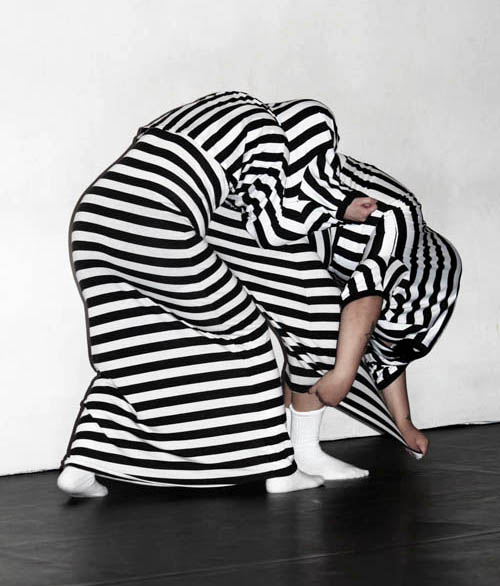
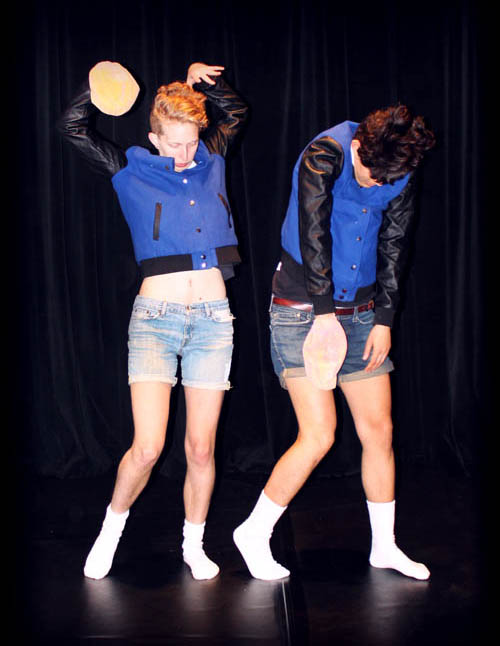
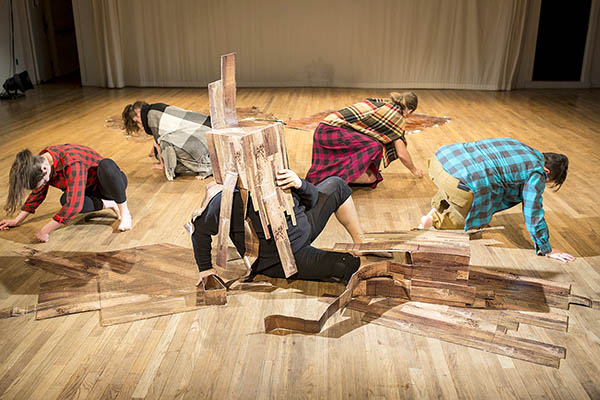
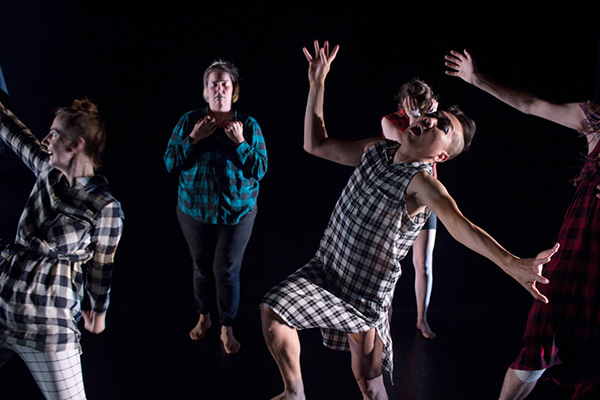
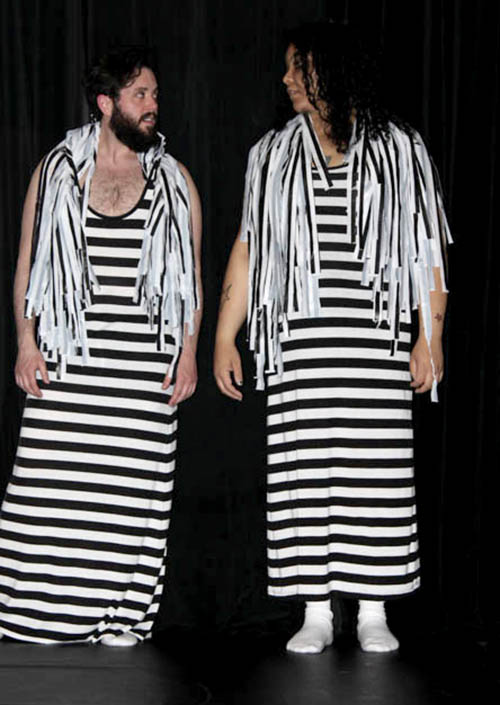
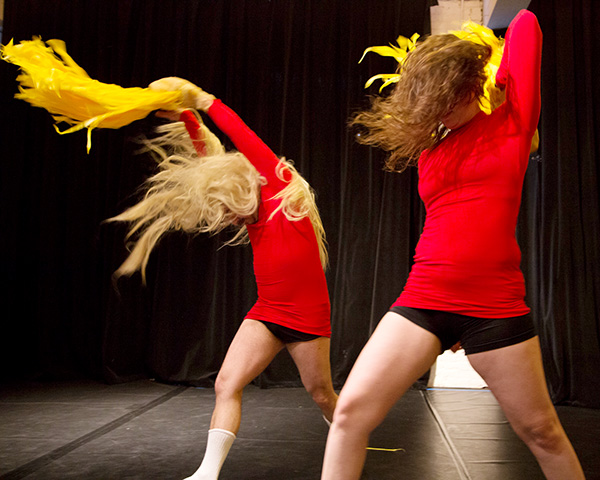
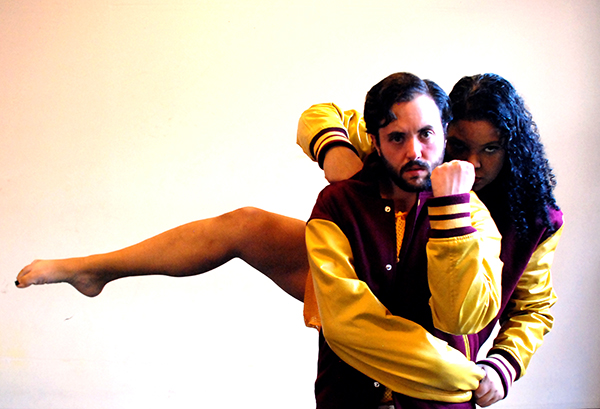
One Response to “Why Choose?”
Thanks again for continuing with this blog. Great read! Brave to allow one’s creative work to associate so closely with one’s identity, helps expand understanding, and hopefully – tolerance and acceptance.
Comments are closed.